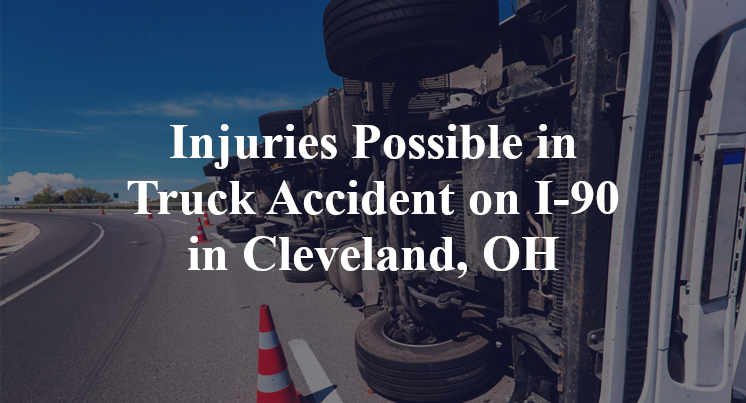Injuries Possible in Truck Accident on I-90 in Cleveland, OH
Cleveland, OH — October 16, 2025, injuries are possible in an overturned truck accident at some point in the afternoon along Interstate Highway 90.
According to authorities, an 18-wheeler was traveling eastbound along I-90 when the accident took place. The exact location of the accident has not been reported.

Details surrounding the accident remain scarce. Officials indicate that, for as yet unknown reasons, the truck was involved in a collision—it is unclear whether it was a single-vehicle collision or if other vehicles were involved—in which it apparently overturned.
Reports state that it is possible that there were injuries in connection with this accident. Additional information pertaining to this incident—including the identities of any injured victims—is not available at this point in time. The investigation is currently ongoing.
Commentary
When an 18-wheeler overturns on a major interstate like I-90, the most important question isn’t what direction it was headed—it’s why did the driver lose control? Until that’s answered, no one can say whether this was a preventable incident, a vehicle failure, or something else entirely.
Right now, it’s not even clear whether other vehicles were involved, which means investigators should be treating this as a potential multi-faceted event. Was the truck responding to something in the roadway—like a sudden stop or a merging vehicle? Was the driver distracted or fatigued? Did a mechanical issue or improperly loaded cargo contribute to the rollover? Each of these scenarios calls for different types of evidence: ECM data, dash cam footage, driver logs, and a full inspection of the truck’s mechanical systems.
In cases I’ve handled, rollovers are rarely the result of a single bad move. More often, they’re the final link in a chain of problems: speed too high for conditions, weight too far off-center, or a driver reacting poorly under pressure. Even something as simple as an overcorrection can turn a minor situation into a major crash when a fully loaded truck is involved.
Another aspect worth investigating is how the company behind the truck prepared the driver for highway driving. Was this a seasoned operator or someone new to the job? Were they rushing to meet a tight schedule? Did the company provide proper training for evasive maneuvers or emergency response? These aren’t academic questions—they often show whether the crash was really about “driver error” or about the system that put that driver on the road.
Until more facts come out, it’s impossible to assign fault. But what is clear is that a commercial truck rolling over in active traffic puts everyone around it at serious risk, and the only way to prevent the next one is by getting to the bottom of what caused this one.
Key Takeaways:
- It’s unclear whether the crash was single-vehicle or involved others, which affects how liability is assessed.
- ECM data, dash cams, and a mechanical inspection will be essential to determine whether speed, distraction, or equipment failure played a role.
- Load configuration and cargo balance may have contributed to the truck’s instability.
- Driver training, fatigue, and company pressure to meet deadlines should also be part of the investigation.
- A full picture of the crash requires understanding not just the moment the truck tipped, but everything that led up to it.

“These are essential reads for anyone dealing with the aftermath of a truck wreck”– Attorney Cory Carlson